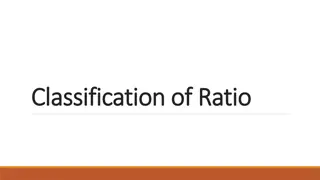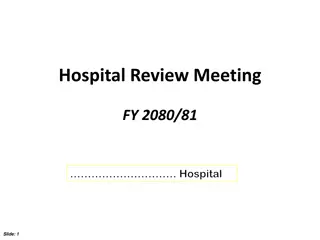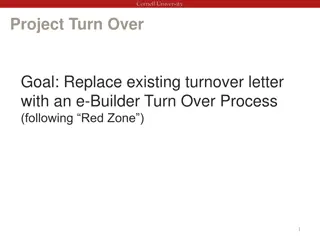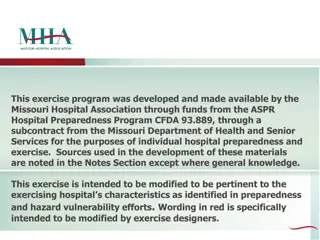Understanding Hospital Bed Turnover and Situational Leadership Characteristics
Hospital bed turnover is crucial for assessing hospital productivity, with turnover interval (TOI) indicating the average period a bed remains empty. Bed turnover rate (BTR) measures patient care efficiency. Situational leadership, adaptable to group needs, involves directing and coaching based on group maturity level. These concepts play vital roles in optimizing hospital utilization and leadership effectiveness.
Download Presentation

Please find below an Image/Link to download the presentation.
The content on the website is provided AS IS for your information and personal use only. It may not be sold, licensed, or shared on other websites without obtaining consent from the author. Download presentation by click this link. If you encounter any issues during the download, it is possible that the publisher has removed the file from their server.
E N D
Presentation Transcript
TURNOVER INTERVAL Turnover interval(TOI): Its is the average period in the days, that a bed remains empty. Average length of time that elapses between the discharge of one inpatient and admission of the next inpatient to the same bed. It the given by the formula : Hospital bed turnover rate= no of discharges ( including deaths ) in the given time period / No of bed in the hospital during that time period. The ideal turnover interval is suggested to be 1-3 days.
SIGNIFICANCE It indicated productivity of the hospital. More bed vacant reflects beds reputations of the hospital. Shows non- utilization of hospital beds
BED TURNOVER RATE Average number of patients cared for a bed during a given periods. BTR:(No of discharges including deaths for a given period of time/ Average bed count for that period of time)x100
CHARACTERSTICS OF SITUATIONAL LEADERSHIP THREE CHARACTERSTICS OF SITUATIONAL LEADERSHIP : Flexibility: Leadership changes according to the requirements of the group or organization, and successful leaders are able to be flexible and adapt their style of leadership to the level of maturity of the group that they're trying to lead. Directing: Situational leadership will be high on the "directive" aspect when the subordinates are not sufficiently developed and need constant supervision. Here, the leader gives specific instructions about what the goals are, and exactly how the goals need to be achieved. Coaching: If the situation demands it, the leader will also coach their team. This is an extension of the directive approach; the leader still provides detailed instructions but they also focus on encouraging the subordinates, soliciting inputs, and explaining why they have made certain decisions.
INDICATES: an imported measures of hospital utilization indices. Given the net effect of charges in occupancy rate and average length of stay (ALS) EXAMPLES: In a particular hospital, there were 2358 discharge in the year 2022. Number of beds in that hospital in that hospital in 2022 was 300. Hospital bed turnover rate = 2358/300=7.86

























